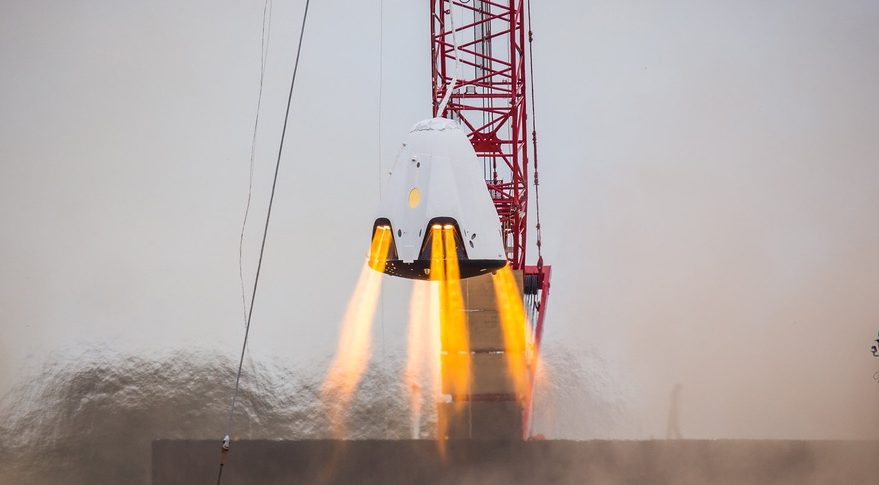
More than a month after a Crew Dragon spacecraft was destroyed in a test of its propulsion system, NASA and SpaceX investigators are still working to determine the cause of the accident and its implications for upcoming test flights.
In a May 28 presentation to the NASA Advisory Council’s human exploration and operations committee, Kathy Lueders, manager of the commercial crew program at NASA, offered few updates on the progress of the investigation into the April 20 incident at a SpaceX pad at Cape Canaveral Air Force Station in Florida.
In that incident, SpaceX was testing both the Draco thrusters and larger SuperDraco abort thrusters in preparation for an in-flight abort test of the capsule that, at the time, was scheduled for the end of June. “An anomaly occurred during activation of the SuperDraco system,” she said, but offered no details on what caused that anomaly.
Lueders did praise SpaceX for how it dealt with the accident and the ongoing investigation. “I will tell you that the team did a great job,” she said of the response. “The team followed the mishap plan beautifully. All the notifications were made. The SpaceX folks did a tremendous job.”
She also indicated that NASA has been kept in the loop about the accident and investigation, including NASA personnel who were at the SpaceX control room at the time the accident took place. A NASA team, she added, is embedded within SpaceX to help with the investigation, such as collecting all the data from the incident. SpaceX, though, is leading the investigation.
The capsule destroyed in the test was the one that flew to the International Space Station on the Demo-1 test flight in March. SpaceX planned to use that capsule on the in-flight abort test this summer.
With that capsule destroyed, Lueders said that SpaceX will use the Crew Dragon spacecraft originally intended for the Demo-2 crewed flight test for the in-flight abort test. The Demo-2 mission will instead use the spacecraft SpaceX was building for the first operational mission, dubbed Crew-1.
With the investigation ongoing, Lueders said the dates of both the in-flight abort test and the Demo-2 mission are under review. Assembly of the Demo-2 capsule continues, she said, although she said workers are keeping open the vehicle’s propulsion system in case they need to make modifications as a result of the investigation. “They’re making progress in a lot of the other areas while trying to keep, most particularly in the prop area, access to the systems that may need to be modified,” she said.
She didn’t give an indication of when that investigation will be completed. “You don’t push your anomaly investigation team too quick,” she said, stressing the importance for them to be “methodical” while working through all parts of the fault tree of potential causes.
Later in the meeting, a committee member asked Lueders if Demo-2 could still fly this year. “They’re getting their vehicle ready by the end of year,” she said of SpaceX. “We need to close out the anomaly investigation. That’s the big thing.”
The accident, she said, was something of a “gift” to the program, since it took place on a test stand, giving them an opportunity to understand what may need to be modified. “We’re learning a lot. Sometimes you learn more from a failure like this,” she said.
“It’s pretty sad not to have that vehicle,” she added. “I was hoping that vehicle would be in a museum one day. But, I think this is a vehicle that continues to serve her purpose to make human spaceflight safer and safer. We will learn from this test, and that learning will be applied to the next vehicle.”
